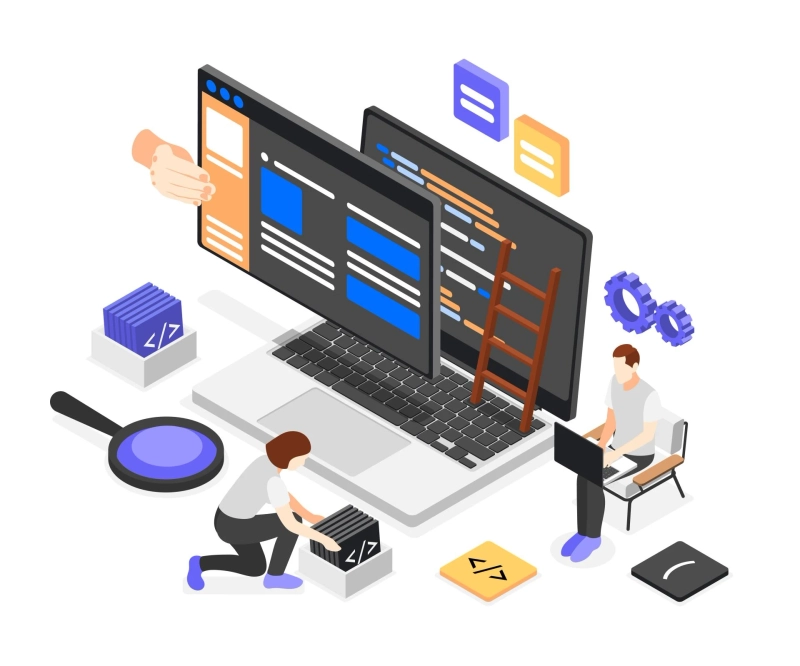In the ever-evolving digital world, businesses need flexible, scalable, and high-performing websites that can adapt to changing technologies. This is where Headless CMS and API-first architecture come into play. Together, they’re transforming how websites are built and managed, offering greater creative freedom, performance efficiency, and long-term adaptability.
Let’s dive into why these technologies are shaping the future of web design and development.
What Is a Headless CMS?
A Headless Content Management System (CMS) is a back-end-only content repository that separates content management from front-end presentation. Unlike traditional CMS platforms (like WordPress or Joomla) that tightly couple content and design, a headless CMS delivers content via APIs to any front-end interface—whether it’s a website, mobile app, smart device, or even wearable tech.
In simple terms, the “head” (front-end) is separated from the “body” (content), allowing developers to use any technology to display the content.
What Is API-First Architecture?
An API-first architecture is an approach where APIs (Application Programming Interfaces) are built before the front-end or back-end systems. It ensures seamless communication between different services and platforms.
For example, your website, mobile app, and digital displays can all pull content from the same API, keeping everything consistent and connected. This architecture promotes scalability, flexibility, and speed—key elements for businesses operating in today’s multi-device digital landscape.
Benefits of Headless CMS and API-First Architecture
1. Unlimited Design Flexibility
With traditional CMS platforms, developers are limited by pre-built templates and frameworks. A headless CMS removes these limitations, enabling web designers and developers to use modern technologies like React, Vue, or Angular for front-end design—creating faster and more dynamic user experiences.
2. Faster Performance and Load Times
Because the front-end and back-end are separated, websites load faster and perform better. This decoupled architecture allows content to be served through lightweight APIs, reducing server load and enhancing performance.
3. Multi-Platform Content Delivery
A single headless CMS can power multiple platforms simultaneously—your website, mobile app, smartwatch, or digital kiosk. This ensures content consistency across all touchpoints, improving brand identity and user experience.
4. Enhanced Security
Traditional CMS platforms are often targeted by hackers because their architecture is tightly connected. A headless CMS minimizes vulnerabilities since it doesn’t expose the back-end directly to users, adding an extra layer of security.
5. Future-Proof Scalability
As new devices and platforms emerge, businesses don’t need to rebuild their websites. The API-first approach ensures that new technologies can easily integrate with existing systems, making your digital presence adaptable to the future.
When Should You Use a Headless CMS?
A headless CMS is ideal for:
- Enterprises managing multiple digital platforms (web, mobile, IoT).
- E-commerce websites that require fast performance and consistent product data.
- Content-heavy businesses like news portals or educational platforms needing flexible delivery.
- Agencies that frequently rebrand or redesign websites without changing the back-end structure.
In short, if your business values flexibility, scalability, and speed, a headless CMS is a strategic investment.
The Future of Web Design with API-Driven Systems
Modern web design services are increasingly adopting API-driven approaches to deliver seamless, personalized, and responsive experiences. Designers and developers can now focus more on creativity, UX, and functionality while relying on robust APIs for content and data delivery.
This evolution is paving the way for truly future-proof web architectures, where adaptability and user experience lead the way.
Conclusion
Headless CMS and API-first architecture are redefining the future of web design and development. By decoupling the front-end and back-end, businesses gain unmatched flexibility, better performance, and the ability to deliver consistent content across multiple digital platforms.
If your goal is to stay ahead in the ever-changing digital ecosystem, adopting a headless CMS approach is a smart and future-ready decision.
Let’s Build the Future Together
Ready to upgrade your website with a modern, scalable architecture?
Contact us today to explore web development solutions powered by headless CMS and API-first design—built to perform, adapt, and grow with your business.
FAQs
Is a headless CMS better than a traditional CMS?
Ans: Yes, for businesses needing flexibility, performance, and multi-platform content delivery, a headless CMS is superior. However, traditional CMS platforms are still suitable for smaller, single-website projects.
Does a headless CMS improve SEO?
Ans: Yes. Faster load times, structured content, and responsive front-end frameworks all contribute to improved SEO performance.
What are some popular headless CMS platforms?
Ans: Leading headless CMS platforms include Strapi, Contentful, Sanity, and Headless WordPress, each offering robust APIs and scalability features.


